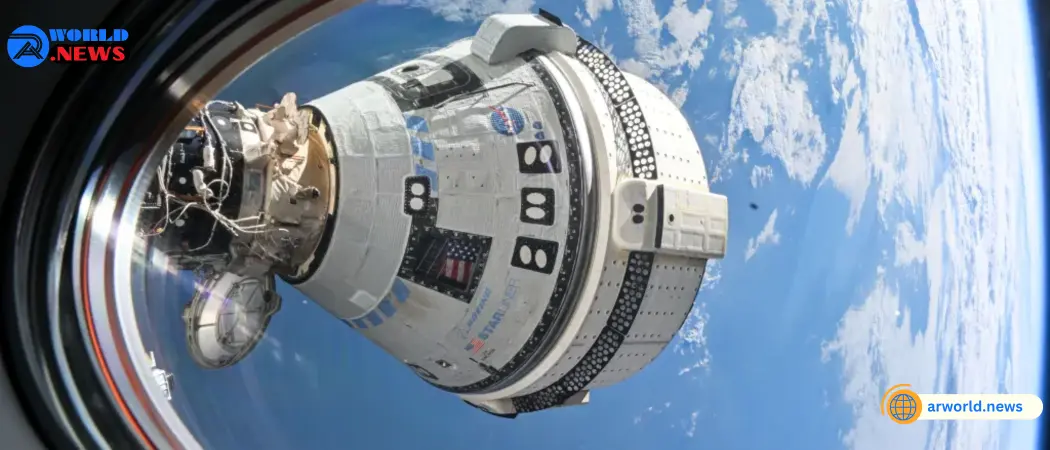NASA Decides To Return Starliner Spacecraft To Earth Without Crew
NASA said Saturday that astronauts Butch Wilmore and Suni Williams will not be onboard Boeing’s Starliner when it returns to Earth. The uncrewed return permits NASA and Boeing to continue gathering testing data on the Starliner throughout its forthcoming voyage home, while simultaneously avoiding putting the crew at unnecessary risk.
Wilmore and Williams, who flew to the International Space Station in June on NASA’s Boeing Crew Flight Test, have been working on station research, maintenance, Starliner system testing, and data processing, among other things.
“Spaceflight is dangerous, even when it is done safely and routinely. A test flight, by definition, is neither safe nor routine. NASA Administrator Bill Nelson stated that the choice to keep Butch and Suni aboard the International Space Station and return Boeing’s Starliner unmanned is the outcome of the agency’s commitment to safety, which is its core value and North Star. “I’m grateful to both the NASA and Boeing teams for all their incredible and detailed work.”
Wilmore and Williams will continue to work as part of the Expedition 71/72 crew until February 2025. They will return home on a Dragon spaceship with two additional crew members assigned to the agency’s SpaceX Crew-9 mission. In early September, the starliner is expected to leave the space station and land safely and autonomously.
NASA and Boeing discovered helium leaks and problems with the spacecraft’s reaction control thrusters when Starliner neared the space station on June 6. Since then, engineering teams have done a lot of work, including examining data, doing flight and ground testing, hosting independent reviews with agency propulsion specialists, and establishing multiple return contingency plans. The uncertainty and lack of expert concurrence do not fulfill the agency’s safety and performance standards for human spaceflight, causing NASA leadership to transfer the crew to the Crew-9 mission.
“Decisions like this are never easy, but I want to commend our NASA and Boeing teams for their thorough analysis, transparent discussions, and focus on safety during the Crew Flight Test,” said Ken Bowersox, assistant administrator for NASA’s Space Operations Mission Directorate. “We learned a lot about the spacecraft throughout its route to the station and while docked. We will also collect additional data on Starliner during the uncrewed return to improve the system for future flights to the space station.”
Starliner is designed to operate autonomously and has completed two unmanned flights. NASA and Boeing will collaborate to adapt end-of-mission planning and the Starliner’s systems in preparation for the uncrewed return in the coming weeks. The starliner must return to Earth before the Crew-9 mission can launch to confirm that a docking port is available on station.
“Starliner is a very capable spacecraft, and, ultimately, this comes down to needing a higher level of certainty to perform a crewed return,” said Steve Stich, manager of NASA’s Commercial Crew Program. “The NASA and Boeing teams have done a tremendous lot of testing and research, and this flight test provides crucial information on Starliner’s performance in space. Our efforts will help prepare for the spacecraft’s uncrewed return and considerably benefit future corrective actions.”
NASA’s Commercial Crew Program needs ships to conduct a crewed test flight to ensure that the system is ready for regular trips to and from the space station. After Starliner returns, the agency will analyze all mission-related data to determine what extra activities are needed to achieve NASA’s certification standards.
The agency’s SpaceX Crew-9 mission, initially scheduled for four crew members, will launch no earlier than Tuesday, September 24. When the Crew-9 roster is confirmed, the agency will provide more information.
NASA and SpaceX are now working on many elements prior to launch, including reconfiguring seats on the Crew-9 Dragon and altering the manifest to include more cargo, personal goods, and Dragon-specific spacesuits for Wilmore and Williams. Furthermore, NASA and SpaceX will launch Crew-9 from new facilities at Space Launch Complex-40 at Cape Canaveral Space Force Station in Florida, providing greater operational flexibility in the run-up to NASA’s planned Europa Clipper launch.
The Crew-9 mission will be the ninth rotational mission to the space station under NASA’s Commercial Crew Program, which collaborates with the American aerospace industry to achieve the goal of safe, dependable, and cost-effective transportation to and from the orbital outpost using American-made rockets and spacecraft that launch from American soil.
The Crew-9 mission will be the ninth rotational mission to the space station under NASA’s Commercial Crew Program, which collaborates with the American aerospace industry to achieve the goal of safe, dependable, and cost-effective transportation to and from the orbital outpost using American-made rockets and spacecraft that launch from American soil.




